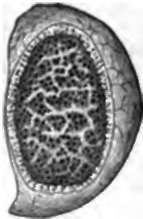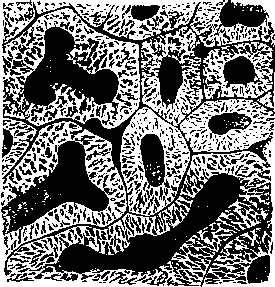97. The Object Of Respiration
Description
This section is from the book "Animal Physiology: The Structure And Functions Of The Human Body", by John Cleland. Also available from Amazon: Animal Physiology, the Structure and Functions of the Human Body.
97. The Object Of Respiration
The Object Of Respiration is to liberate the carbonic acid accumulated in the blood returning from the tissues, and to take in a fresh supply of oxygen, which, passing to the tissues, is used in chemical decompositions, by which more carbonic acid is produced. Respiration, therefore, is not a process of combustion, but it affords an index of the amount of combustion taking place in the tissues. It consists essentially of an interchange of gases between the blood and the medium in which the animal lives, and requires that these two should be brought into as close contact as possible.
This contact is achieved in some animals by introducing the medium into the body, and conveying it to the tissues. Thus, in star fishes there is a water-vascular system, and in insects there are air tubes or tracheś kept open by a spiral thread coiled round them, which, opening by stigmata on the sides, ramify throughout the whole body, and are emptied and refilled with air by pulsatile movements of the abdomen. But in the majority of animals, including all vertebrates, the blood is brought into contact with the surrounding medium in a special organ devoted to the purpose; and this in water-breathing animals consists of gills or projecting organs with blood-vessels on the surface, while in air-breathing animals it consists of lungs or bags into which the air is introduced.
In frogs and serpents, the lungs are simple pouches with shallow recesses round about, the partitions of which project into the interior; and these pouches are each opened abruptly into by a main air tube or bronchus. In turtles and crocodiles the air tubes are branched, and each branch opens into a cavity in the heart of a sponge of ramifying recesses;
•while in birds there are no longer any dilated cavities, but every air tube is surrounded with a system of air cells, completely separated by septa of connective tissue from those which surround others. In the lungs of man and other mammals, the air tubes go on dividing and subdividing till they terminate in minute tubules, which open into irregular passages, surrounded with air cells: and in the manner of their development they exhibit both the modes of increase in complexity observed in the zoological series; for they take origin in the embryo as a pair of simple pouches coming off from the throat, and these branch out into smaller pouches budding in like manner till lobules are formed, which, instead of branching outwards, have septa growing inwards into their cavities.

Fig. 72. Frog's Lung, opened from behind, enlarged.

Fig. 73. Duck's Lung; section, magnified twenty diameters.
Continue to:
